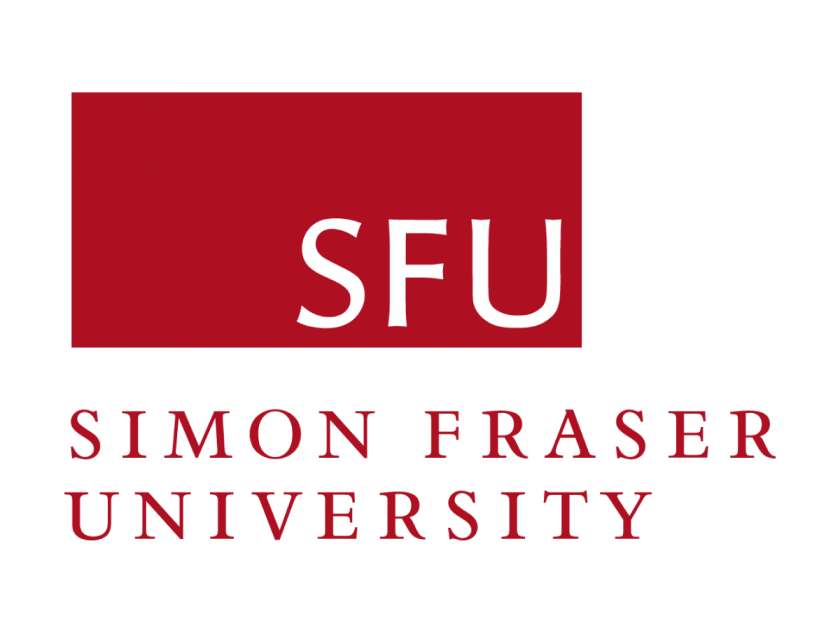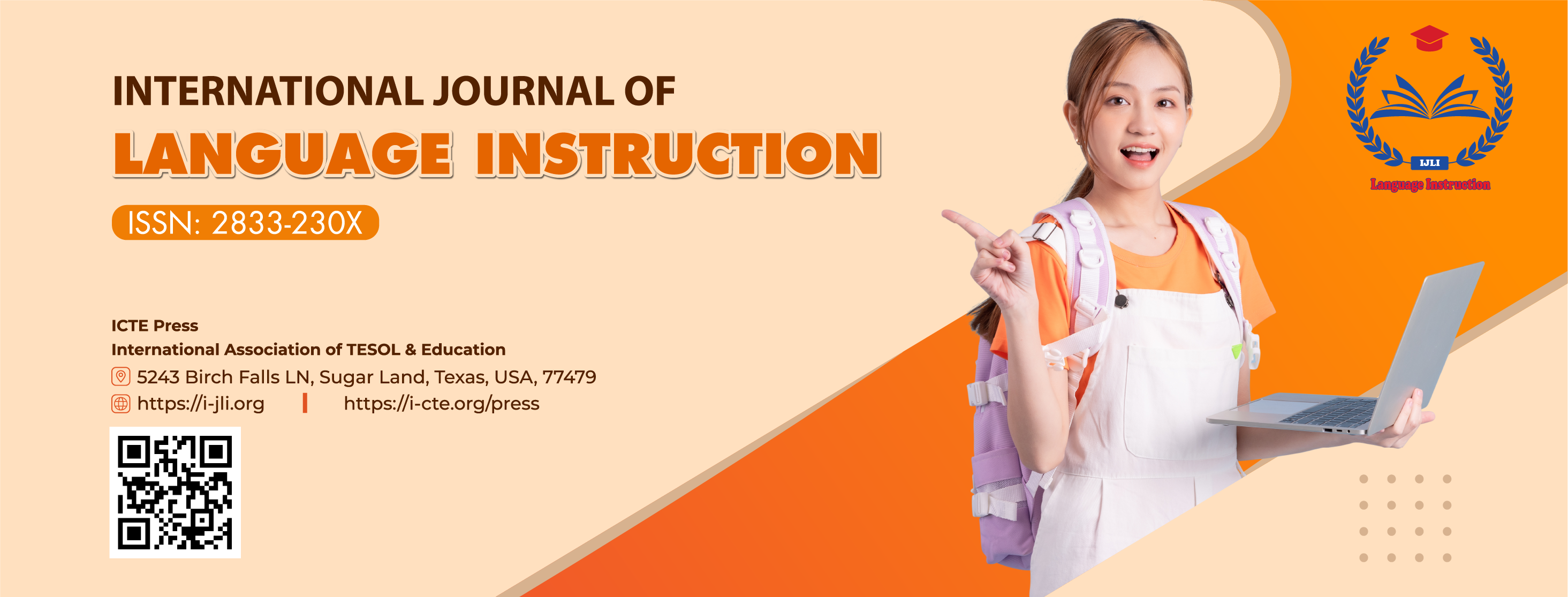TVU Non-English Majors’ Attitudes toward Utilizing Oral Presentations to Overcome Speaking Difficulties in English Classroom
DOI:
https://doi.org/10.54855/ijli.22119Keywords:
oral presentation, speaking difficulties, attitudesAbstract
Mastering speaking is one of the biggest goals of students learning English. However, facing speaking difficulties is unavoidable. Impressively, the oral presentation is an effective solution or exercise for improving speaking. This study aims to determine non-English majors’ speaking difficulties and reveal their attitudes toward utilizing oral presentation to overcome speaking difficulties in English classrooms in a university in the Mekong Delta of Vietnam, particularly at Tra Vinh University. Two questionnaires were used to collect the data from 68 first-year students. According to the results, when speaking, students found it difficult to express themselves effectively in English, to communicate in English without preparation, and to create or engage in an English conversation. For the positive impacts of oral presentations on speaking, the responders in this research pointed out that they had the motivation to speak English, formed and participated in an English conversation effectively, and obtained various ideas for their speaking performance thanks to conducting oral presentations.
References
Afrida, T. (2017). The use of oral presentation in English speaking class (A case study at the department of English education of UIN AR-Raniry) (Doctoral dissertation). UIN Ar- Raniry Banda Aceh, Indonesia.
Al Hosni, S. (2014). Speaking difficulties encountered by young EFL learners. International Journal on Studies in English Language and Literature (IJSELL), 2(6), 22–30.
Al-Issa, A. S., & Al-Qubtan, R. (2010). Taking the floor: Oral presentations in EFL classrooms. Tesol Journal, 1(2), 227–246. https://doi.org/10.5054/tj.2010.220425
Al-Lawatiyah, M. T. (1995). A diagnostic study of the difficulties encountered by Omani secondary school students in their oral production of English. (Doctoral dissertation). Sultan Qaboos University, Oman.
Al-Nouh, N. A., Abdul-Kareem, M. M., & Taqi, H. A. (2015). EFL college students’ perceptions of the difficulties in oral presentation as a form of assessment. International Journal of Higher Education, 4(1), 136–150. http://dx.doi.org/10.5430/ijhe.v4n1p136
Amoah, S., & Yeboah, J. (2021). The speaking difficulties of Chinese EFL learners and their motivation towards speaking the English language. Journal of Language and Linguistic Studies, 17(1), 56–69. https://doi.org/10.52462/jlls.4
Arnold, J., & Brown, H. D. (1999). A map of the terrain. Affect in Language Learning, 1–24.
Ati, A., & Parmawati, A. (2022). The use of oral presentation in teaching english to improve students speaking skill. PROJECT (Professional Journal of English Education), 5(2), 300–305.
Barker, A. (2006). Improve your communication skills. India: Kogan Page Publishers.
Bowman, B. (1989). TEFL/TESL: Teaching English as a Foreign or Second Language. Manual M041. Center for Applied Linguistics.
Breen, M. H. (2001). Learner contributions to language learning: New directions in research. Ilha Do Desterro A Journal of English Language, Literatures in English and Cultural Studies, (41), 267–268.
Brooks, G., & Wilson, J. (2014). Using oral presentations to improve students’ English language skills. Kwansei Gakuin University Humanities Review, 19(1), 199–212.
Budinski, K. G. (2005). Preparing and delivering technical presentations. USA: ASTM International.
Burnkart, G. (1998). Spoken language: What is and how to teach it. Center for Applied Linguistics.
Carroll, C. (2006). Enhancing reflective learning through role-plays: The use of an effective sales presentation evaluation form in student role-plays. Marketing Education Review, 16(1), 9–13. https://doi.org/10.1080/10528008.2006.11488931
Chaney, A. L., & Burk, T. L. (1998). Teaching oral communication in grades K-8. Boston: Allyn and Bacon.
Chikh, M., & Dich, Y. (2015). The Impact of oral presentations on developing EFL students’ communicative competence: Case of second year LMD students at the university of Tlemcen (Doctoral dissertation). University of Tlemcen, Algeria.
Dehbi, L. (2019). The role of oral presentations in reducing EFL learner’s speech anxiety the case study of second year EFL students at Mohamed Kheider University of Biskra (MA Thesis). Mohamed Kheider University of Biskra, Algeria.
Flavell, J. H. (1987). Speculations about the nature and development of metacognition. Metacognition, Motivation and Understanding.
Fraioui, R. (2016). Improving students’ speaking proficiency in EFL classes through oral presentation technique a case study of second year LMD students’ at Mohamed Kheider University of Biskra (PhD Thesis). Mohamed Kheider University of Biskra, Algeria.
Gan, Z. (2013). Understanding English speaking difficulties: An investigation of two Chinese populations. Journal of Multilingual and Multicultural Development, 34(3), 231–248. https://doi.org/10.1080/01434632.2013.768622
Girard, T., Pinar, M., & Trapp, P. (2011). An exploratory study of class presentations and peer evaluations: Do students perceive the benefits. Academy of Educational Leadership Journal, 15(1), 77–94.
Gurbuz, C., & Cabaroglu, N. (2021). EFL students’ perceptions of oral presentations: Implications for motivation, language ability and speech anxiety. Journal of Language and Linguistic Studies, 17(1), 600–614. https://doi.org/10.52462/jlls.41
Hadfield, J. (1990). A collection of games and activities for low to mid-intermediate students of English: Intermediate communication games. Hong Kong: Thomus and Nelson and Sons.
Hammad, E. A. (2020). The impact of oral presentations on Al-Aqsa University EFL students’ speaking performance, speaking anxiety and achievement in ELT Methodology 1. Journal of Second and Multiple Language Acquisition, 8(1), 1–27.
Hasan, A. M., & Hasan, Z. F. (2019). Students’ perception towards literature integration in the English language departments at Duhok and Zakho Universities. Advances in Language and Literary Studies, 10(4), 130. https://doi.org/10.7575/aiac.alls.v.10n.4p.130
Horwitz, E. K. (2001). Language anxiety and achievement. Annual Review of Applied Linguistics, 21, 112–126. https://doi.org/10.1017/S0267190501000071
Horwitz, E. K. (2008). Becoming a language teacher: A practical guide to second language learning and teaching. Harlow: Pearson Education.
Islam, W., Ahmad, S., & Islam, M. D. (2022). Investigating the Problems Faced by the University EFL Learners in Speaking English Language. International Journal of TESOL & Education, 2(2), 47–65. https://doi.org/10.54855/ijte.22223
King, J. (2002). Preparing EFL learners for oral presentations. Dong Hwa Journal of Humanistic Studies, 4, 401–418.
Laili, D. M. (2015). Improving students’ speaking skill through oral presentation technique of the tenth grade students at Man Trenggalek (MA Thesis). State Islamic Institute of Tulungagung, Tulungagung.
Le, H. V. T. (2021). Using group oral presentations as a formative assessment in teaching English for Vietnamese EFL students. 288–296. Atlantis Press.
Leong, L. M., & Ahmadi, S. M. (2017). An analysis of factors influencing learners’ English speaking skill. International Journal of Research in English Education, 34–41.
Liando, N. V., Sahetapi, R. J., & Maru, M. G. (2018). English major students’ perceptions towards watching English movies in listening and speaking skills development. Advances in Social Sciences Research Journal, 5(6), 1–16.
Lindholm-Leary, K., Borsato, G., Genesee, F., Saunders, W. M., & Christian, D. (2006). Educating English language learners: A synthesis of research evidence. USA: Cambridge University Press.
Littlewood, W. (2007). Communicative language teaching. UK: Cambridge University Press.
Mallette, L. A., & Berger, C. (2011). Writing for conferences: A handbook for graduate students and faculty: A handbook for graduate students and faculty. USA: ABC-CLIO.
McGroarty, M. (1996). Language attitudes, motivation and standards. In Sociolinguistics and Language Teaching. UK: Cambridge University Press.
Mohammed, K. (2014). Investigating EFL learners’ attitudes towards literature teaching methods: Case of 2nd year LMD students at the University of Tlemcen (PhD Thesis). University of Tlemcen, Algeria.
Murphy, J. M. (1992). Preparing ESL students for the basic speech course: Approach, design, and procedure. English for Specific Purposes, 11(1), 51–70. https://doi.org/10.1016/0889-4906(92)90006-V
Nadia, Z. (2013). The use of students’ oral presentations in enhancing speaking skill in the English language classrooms (MA Thesis). Mohamed Kheider University of Biskra, Algeria.
Ni, H. (2012). The effects of affective factors in SLA and pedagogical implications. Theory & Practice in Language Studies, 2(7), 1508–1513. https://doi.org/10.4304/tpls.2.7.1508-1513
Nunan, D., David, N., & Swan, M. (1992). Research methods in language learning. USA: Cambridge University Press.
Pabro-Maquidato, I. M. (2021). The experience of English speaking anxiety and coping strategies: A transcendental phenomenological study. International Journal of TESOL & Education, 1(2), 45–64. Retrieved from https://i-jte.org/index.php/journal/article/view/32
Parmis, A. A., Pole, M. C. M., & Pinote, F. I. (2020). Students ’ oral presentation: Personality traits, difficulties, and speaking proficiency. International Journal of Current Research, 12(1), 9752–9756.
Pham, M. T., Nguyen, D. N. Q., Nguyen, T. K. C., Nguyen, H. N. M., Hoang, T. A. T., & Pham, V. P. H. (2022). The Reality of English Presentation Skills of English-majored Students in Vietnam: A Case Study at Van Lang University. International Journal of TESOL & Education, 2(2), 27–46. https://doi.org/10.54855/ijte.22222
Putri, A. F. D., Sudarsono, S., & Husin, S. (2019). Improving the students’ speaking ability through oral presentation. Jurnal Pendidikan Dan Pembelajaran Khatulistiwa, 8(3). http://dx.doi.org/10.26418/jppk.v8i3.32318
Riadil, I. G. (2020). Does oral presentation affect the development of the students’ ability to speak in EFL classroom? Social Sciences, Humanities and Education Journal (SHE Journal), 1(2), 13–21.
Rivers, W. M. (2018). Teaching foreign language skills. USA: University of Chicago Press.
Sahriana, S. (2018). Improving students’ English ability through oral presentation task: The students’ perception. GEN TEFL Journal, 3(1), 43–49.
Schommer, M., Crouse, A., & Rhodes, N. (1992). Epistemological beliefs and mathematical text comprehension: Believing it is simple does not make it so. Journal of Educational Psychology, 84(4), 435–443.
Scovel, T. (1978). The effect of affect on foreign language learning: A review of the anxiety research. Language Learning, 28(1), 129–142. https://doi.org/10.1111/j.1467-1770.1978.tb00309.x
Shaw, C., & Mcdonough, J. (1993). Materials and methods in ELT: A teacher’s guide. Oxford: Blackwell Publishers.
Thomas, L. F., & Harri-Augstein, E. S. (1983). The evaluation of an intelligent learning system, learning-to-learn and the CAL-Skills Trainer [Final Report]. Middx: Brunel University.
Tok, H. (2009). EFL learners’ communication obstacles. Electronic Journal of Social Sciences, 8(29), 84–100.
Ur, P. (1999). A course in language teaching. UK: Cambridge University Press.
Wangsen, W. (2019). The study on English speaking difficulties in classroom presentation faced by Thai students at the university of Muhammadiyah Malang (Doctoral dissertation). University of Muhammadiyah Malang, Malang.
Westrup, H., & Baker, J. (2003). Essential speaking skills. New York: Continuum.
White, J. (2004). Speaking, listening, and learning materials. Qualification and Curriculum Authority and the National Literacy Strategy Journal. Retrieved from http://www.literacytrust.org.uk/Pubs/white.html
Xiaolu, L. (2006). Confidence index and oral proficiency. Celea Journal, 29(4), 11–14.
Zua, L. (2008). Exploring the affective factors influencing teaching of spoken English. Retrieved from http://okarticle.com/html/Thesis/20080104/26.html
Downloads
Published
Issue
Section
License
Copyright (c) 2022 Tuong Hoang Gia Bao

This work is licensed under a Creative Commons Attribution-NonCommercial 4.0 International License.
The copyright of all articles published in the International Journal of Language Instruction (ijli) remains with the Authors, i.e. Authors retain full ownership of their article. Permitted third-party reuse of the open access articles is defined by the applicable Creative Commons (CC) end-user license which is accepted by the Authors upon submission of their paper. All articles in the ijli are published under the CC BY-NC 4.0 license, meaning that end users can freely share an article (i.e. copy and redistribute the material in any medium or format) and adapt it (i.e. remix, transform and build upon the material) on the condition that proper attribution is given (i.e. appropriate credit, a link to the applicable license and an indication if any changes were made; all in such a way that does not suggest that the licensor endorses the user or the use) and the material is only used for non-commercial purposes.
Authors are able to enter into separate, additional contractual arrangements for the non-exclusive distribution of the journal's published version of the work (e.g., post it to an institutional repository, in a journal or publish it in a book), with an acknowledgment of its initial publication in this journal.











